Brick Matching
Moses Jenkins
 |
||
| Templeton’s Carpet Factory, Glasgow: if care and time is expended in matching bricks for repair work our brick built heritage can be preserved for future generations. (Photo by Moses Jenkins) |
When brickwork has suffered decay it is often necessary to cut out bricks and replace them. It may be possible to reverse bricks in situ or obtain suitable matches from reclaimed stock, but new bricks for repair work often need to be sourced from manufacturers. This article discusses the various characteristics of bricks which need to be considered when matching new bricks for use in traditional brick buildings.
Bricks in the UK exhibit considerable diversity in their characteristics, so it is important for both aesthetic and technical reasons to source new bricks which match those used originally. This requires careful consideration and balancing of a number of factors. As well as size, shape, colour and type of brick, technical requirements will be integral to the long term success of any repair made to a brick wall and include water absorption rates, soluble salt content and frost resistance. Just as considerable time is spent securing the correct petrographic match for stone indents or a proper geological match for a patch repair to a slate roof, so too should time and care be taken when sourcing bricks for use in conservation, repair and maintenance.
THE PROCESS OF BRICK MATCHING
BRICK TYPE |
INDICATIVE CHARACTERISTICS |
Handmade |
Bricks moulded by hand, often with irregular variegated appearance
in terms of colour and often smaller than machine-made bricks |
Common |
These bricks vary significantly in both texture and colour, generally being rough to the touch and with variegated colour |
Glazed |
Uniform, glossy appearance, manufactured in a wide range of colours |
Engineering |
Often of a darker colour and dense appearance |
Special shaped brick |
Moulded in a nonstandard shape to fulfil a specific decorative or technical purpose |
Pressed facing |
Bricks which have been pressed during mechanised brick production, generally with a uniform texture and colour |
Rubbing |
Bricks that are softer and free of inclusions to allow cutting and rubbing in gauged brickwork |
Extruded (also known as |
Bricks which have been produced by extrusion, often with characteristic drag marks on the face |
The first stage in the process of matching bricks is to identify the key characteristics of the bricks forming the wall being worked on, as discussed in more detail below. Having done this, the process of finding a suitable match begins. This will involve looking at the output of different brickworks and narrowing the search down to those which produce bricks broadly matching what is being looked for. Many brick making companies will supply reference panels to allow comparison of features such as texture and colour. When the search for a match has been narrowed sufficiently, samples of full bricks should be obtained and these should be compared on site to existing bricks. If several different types or sizes are required, this process will need to be repeated for each type. Sufficient time should be allowed for this process to be undertaken with care and to allow for the extra time that may be required for delivery.
BRICK TYPE
Bricks of many different types are found throughout the UK and identifying which is used within an area of brickwork being repaired is critical to ensuring that replacement bricks are aesthetically and technically compatible with the wall into which they will form a part. Broadly the following brick types are likely to be found:
COMMON BRICK TYPES IN BRITAIN AND THEIR CHARACTERISTICS
Each of these brick types has its own appearance characteristics which can be used to visually identify the type of brick present in a wall. Some buildings will use bricks of different types in different parts of the structure. For example, facing bricks may be used for the principal facade of a building with common bricks for the rear and side elevations. Likewise, rubbing bricks may be used to form gauged arches and other enrichments in walls formed of bricks of a different type.
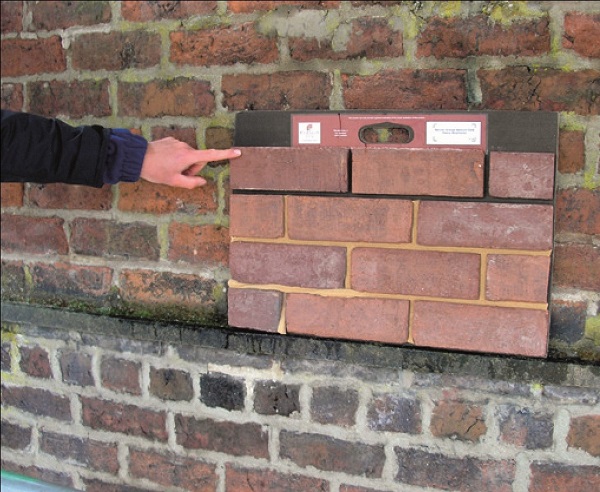 |
 |
| Brick manufacturers will often supply reference panels to allow visual comparison with existing brickwork. (Photo by Moses Jenkins) | Poor matching of bricks has a significant impact in terms of appearance and performance. (Photo by Moses Jenkins) |
For some types such as handmade bricks there may be several different manufacturers who can supply replacements. However, matching other brick types can be a challenge. Common bricks, manufactured from colliery shale are very hard to match and a close match in terms of appearance from a company which manufactures using a different method or raw material may be the best available.
SIZE
The size of bricks within a wall is generally related to the type of brick and the time period in which it was produced. For example, facing bricks were commonly made thinner than common bricks, while glazed bricks were typically produced larger and laid with finer joints. During the period of the brick tax (1784 to 1850) some works produced larger bricks in order to reduce the amount of duty paid. There is evidence for regional variation in the size of bricks used related to the gauge (the height of four courses of bricks and mortar joints) to which the brickwork was to be built. In the north of England what is termed ‘northern gauge’ is commonly found in four vertical courses rising to 13.5 inches in height and in Scotland ‘Scottish gauge’ of between 12 to 15 inches is commonly found.
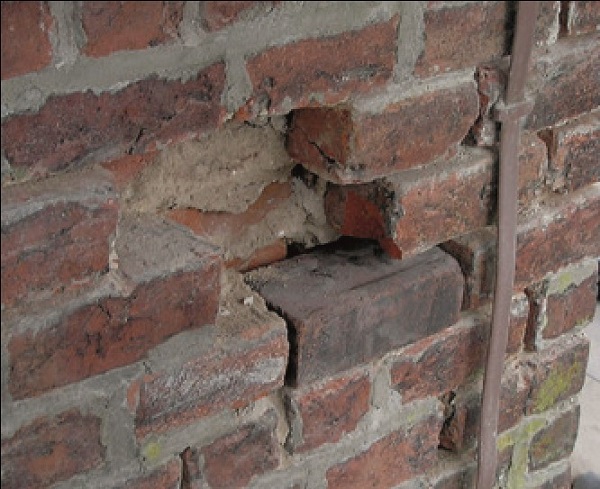 |
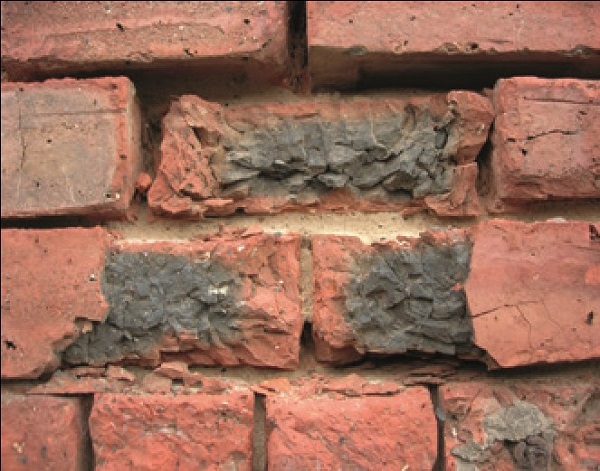 |
| Testing a full-sized brick in situ ahead of ordering a batch of replacements. (Photo by Moses Jenkins) | Where bricks are significantly decayed suitable replacements will be required to carry out an effective repair. (Photo by Moses Jenkins) |
Ascertaining the size of bricks and sourcing replacements to match is critical to ensuring both the aesthetic and structural integrity of brickwork. Generally the average size of 12 bricks over several courses is taken to give an accurate indication of the size of the bricks throughout. The length, breadth and height of the bricks will need to be established, therefore both headers and stretchers will need to be measured. As with brick type, however, bricks of different sizes can be found in the same building.
COLOUR
DURABILITY AGAINST FREEZE-THAW RATING OF |
|
Frost Rating |
Description of Rating |
Fo |
Suitable for passive exposure |
F1 |
Suitable for normal exposure |
F2 |
Suitable for severe exposure |
Brick colour typically ranges from dark red to orange, with white, cream or yellow bricks also common. The colour of bricks comes from a combination of the minerology of the raw materials employed in their manufacture, the temperature reached during firing and the atmosphere within the kiln. For example, the clay used for London Stock Bricks, along with alluvial and boulder clay tends to fire to a red or yellow colour. Jurassic clay of the type found in the Oxford clay formation fires to a red or light red colour. Carboniferous deposits of the type in the Midlands, Scotland and the north of England fire to red, brown or buff. Where calcium carbonate is present within brick clay this will burn to a yellow or buff colour, as will bricks formed of fireclay. Today, some manufacturers will use clays from different sources to achieve the colour required. The other way to impart colour to bricks is to glaze them, with glazed bricks coming into common use from the mid 19th century onwards.
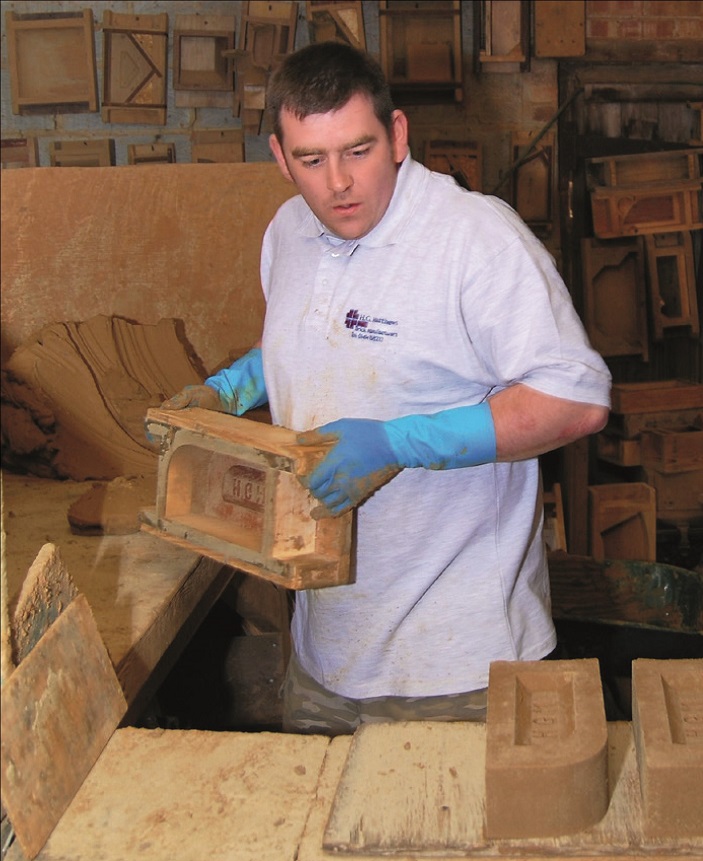 |
||
| Specially shaped bricks can be custom made to match. (Photo by courtesy of HG Matthews) |
The use of bricks of differing colours for decorative effect can be seen in various contexts. Until the 17th century diaper patterned brickwork could be found contrasting darker, more thoroughly fired bricks with red brick facings. From the mid 19th century bricks of different colours (commonly lighter colours but sometimes darker) were used to form patterns. This was often seen in the formation of arches, reveals and quoins around openings. Incredibly intricate decorative patterns could be formed using such polychromatic brickwork.
It is important that when brickwork is being repaired, the replacement bricks should match the colour of those used originally to minimise visual impact. Many brick manufacturers will offer a colour matching service. It is best practice to try wherever possible to find bricks which are naturally the colour required rather than artificially tinting bricks to give a match.
SHAPE
Bricks in their standard form are rectangular with parallel sides. However, there are often situations where bricks of a nonstandard shape are required for both practical and decorative reasons. The two principal methods of producing a nonstandard shape are to cut a brick to the form required or to mould it to shape prior to firing, creating what is commonly referred to as a special. The use of moulded brick ornament parallels the history of terracotta, and after a brief appearance in the 15th century it largely fell out of use until the terracotta revival which emerged in the mid 19th century. Georgian decoratively shaped brickwork is predominantly carved, with simple shapes being cut using a brick axe. There is an incredible range of specials which may be found used in traditional buildings; one Scottish firm produced over 1,000 different shapes in the 1890s.
 |
 |
| A batch of wood fired bricks ready for use in repair work. (Photo by courtesy of HG Matthews) | Bricks of different sizes used in the same building, five courses of the thinner facing bricks are the same height as three courses of the larger common bricks. (Photo by Moses Jenkins) |
When repairing brickwork which uses special bricks these should always be matched to ensure the structural and visual integrity of the brickwork. Generally, if a brick making company can supply matching standard shaped bricks then it will also be able to supply specials. Many brick makers will be able to form a purpose-made mould and supply specials to a customer’s requirements. This may take time, however, and sufficient leeway should be allowed in the planning of a project which requires special bricks to be formed.
SURFACE TEXTURE
The surface texture of replacement bricks should also match that of the originals, this being largely dependent on the method of manufacture and the raw materials used. Extruded bricks, for example, are likely to have drag marks on the face of the brick; common bricks are likely to have a granular appearance; pressed facing bricks a smoother more homogenous feel to surface texture. Sand moulded handmade bricks often have characteristic creases in their surface known as the brickmaker’s smile. The nature and type of inclusions found in the clay used to manufacture bricks can also influence surface appearance. If the brick type is matched the texture will normally be similar.
ACTIVE SOLUABLE SALTS RATING OF NEW BRICKS |
|
Rating |
Exposure |
So |
Not exposed |
S1 |
Normal exposure |
S2 |
Prolonged saturation |
FROST RESISTANCE
The ability of a new brick to resist the actions of frost is defined under the relevant standard shown below. It is important to ensure that any bricks which are being matched for use in an existing wall have an appropriate frost resistance rating to ensure they will form a durable and long lasting repair.
It is likely that in repair situations of an external wall an F2 brick will be the most appropriate. F1 and F0 bricks are more likely to be appropriate for internal uses or in areas where there is little chance of exposure to frost. Where bricks such as handmade or soft rubbing bricks are being used these may come with a frost resistance rating lower than F2. In such situations it is likely that this will match the properties of the original and will be acceptable.
SOLUBLE SALT CONTENT
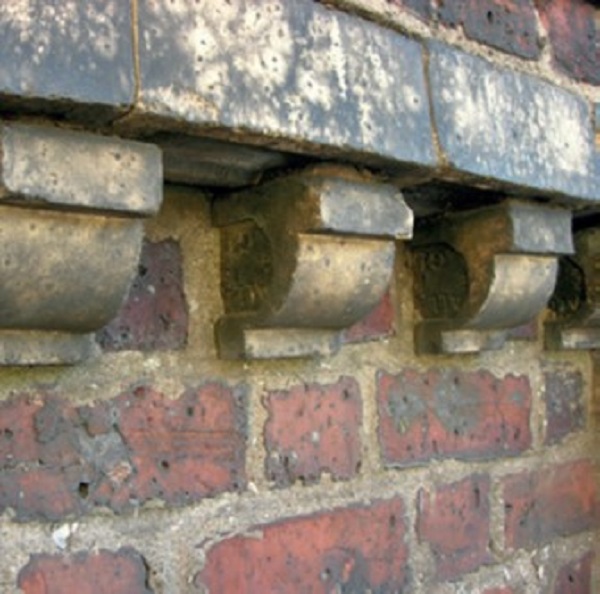 |
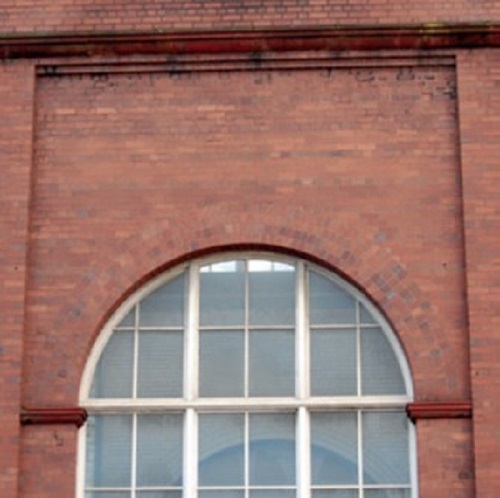 |
| Special bricks of many different shapes are found throughout Britain. In this case a moulded convex brick has been used. (Photo by Moses Jenkins) | Pressed facing bricks generally exhibit a smooth, uniform surface appearance. (Photo by Moses Jenkins) |
Active soluble salts content is a further technical consideration when matching bricks for repair work. It is important to consider soluble salts in any new replacement bricks being inserted into a wall. The water-soluble salts content of a brick is defined in the relevant technical data for new bricks as follows:
For the repair of traditional construction an S2 rated brick is likely to be the most appropriate. Given the long lifespan of traditional brickwork and the greater exposure to rain that climate change will bring, bricks meeting this rating will give a greater margin of safety for the future and reduce the likelihood of soluble salts from bricks used in repair work migrating into adjacent original work. Again, exceptions to this may arise in particular circumstances but an S2 rated brick is likely to be the most durable in the long term.
WATER ABSORPTION RATE
 |
||
| Early Georgian brickwork at Sherman's Hall, Dedham, Essex with finely carved brickwork. (Photo by Jonathan Taylor) |
The water absorption rate of a brick is an integral indicator of how that brick behaves in a wall. It is important to match, as far as possible, the water absorption rate of new bricks that are being used for repair work to those which are already present in a wall. If the water absorption rate of a new section of brickwork is significantly lower than that of its neighbours, there is a risk that rainwater which hits the wall will run off from the new section and saturate the original brickwork. Likewise, if the water absorption rate of the repaired section is significantly higher than the original brickwork then the new work may suffer from excess saturation. This is not to say that water absorption rates must match exactly, but rather that it is good practice to broadly have the absorption rates of original and repair work in alignment.
Tests on the water absorption rates of samples of traditional bricks carried out for Historic Environment Scotland show broad patterns in the absorption rates for traditional bricks of different kinds. All bricks manufactured today provide a water absorption rate as part of their technical data. Broadly, if bricks of the same type are sourced for a repair project this will mean water absorption rates are in alignment.
WATER ABSORBTION RATES OF TRADITIONAL BRICKS |
|
Brick Type |
Likely Water Absorption Rate |
Common |
7–9% (lower absorption class) 12.5–14.5% (higher absorption class) |
Handmade |
13-17% |
Pressed Facing |
6-9% |
Extruded |
8–9% (lower absorption class) 11–18% (higher absorption class) |
Glazed |
0.5% (fully glazed) 7–11% (partially glazed) |
Finding the right brick for a repair project may require an investment in both time and cost – time in terms of sourcing a suitable match and cost in terms of paying for a higher quality product which matches the original. The investment will, however, ensure a better match which will give an improved technical performance and an authentic repair, true to the original aesthetics of the building. In this way our brick built heritage can be repaired and maintained in a way which will last long into the future.
Further Reading
- G Lynch, Tudor Brickwork, The Building Conservation Directory, Cathedral Communications, 2012
- G Lynch, Brickwork History, Technology and Practice, Rutledge, 1994
- G Lynch, The History of Gauged Brickwork, Elsevier, 2007
- Historic England, Practical Building Conservation Earth, Brick and Terracotta, Ashgate 2015
- M Jenkins, Traditional Scottish Brickwork, Historic Environment Scotland, 2014
All photos were taken by Moses Jenkins unless otherwise stated.



